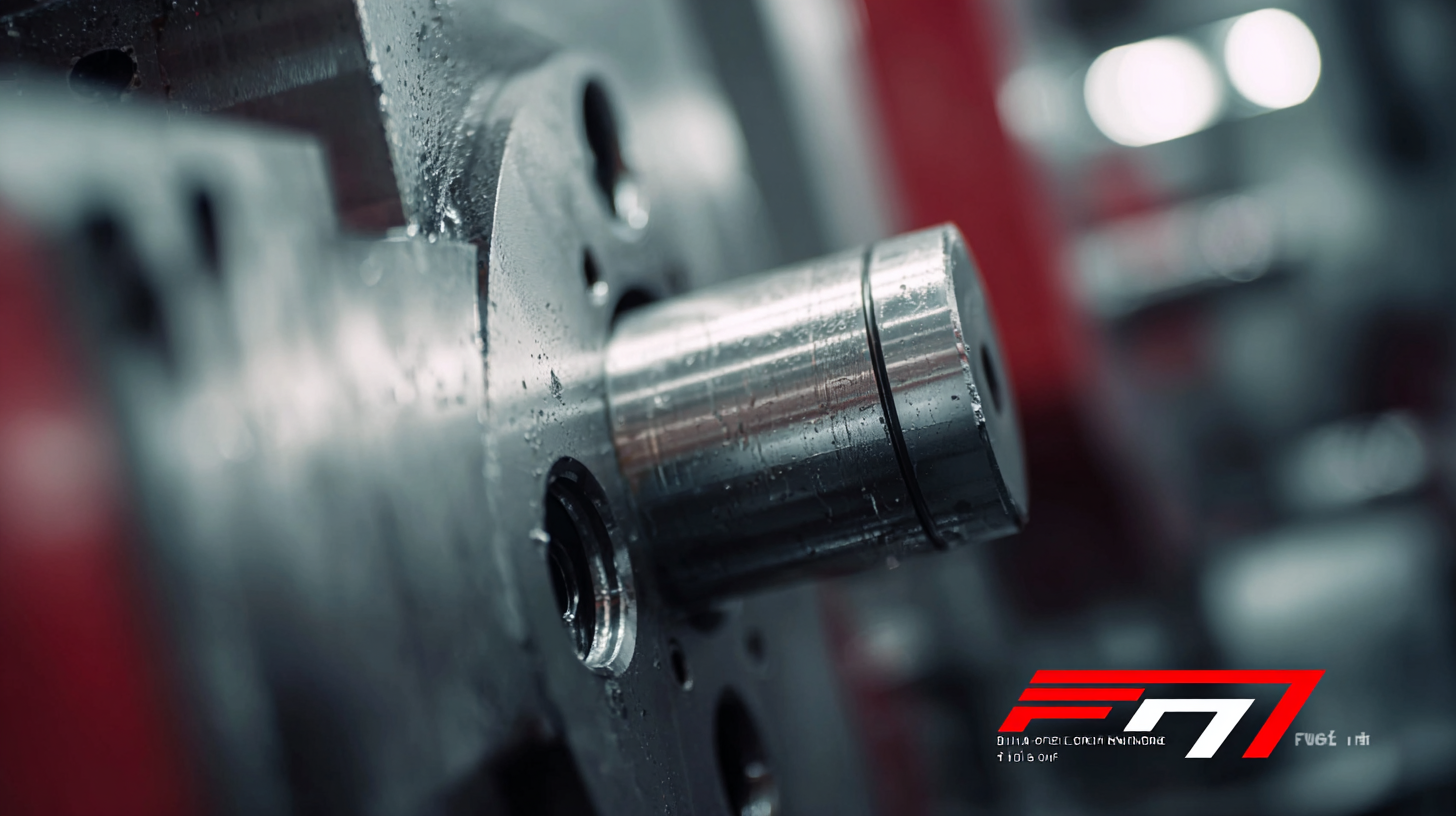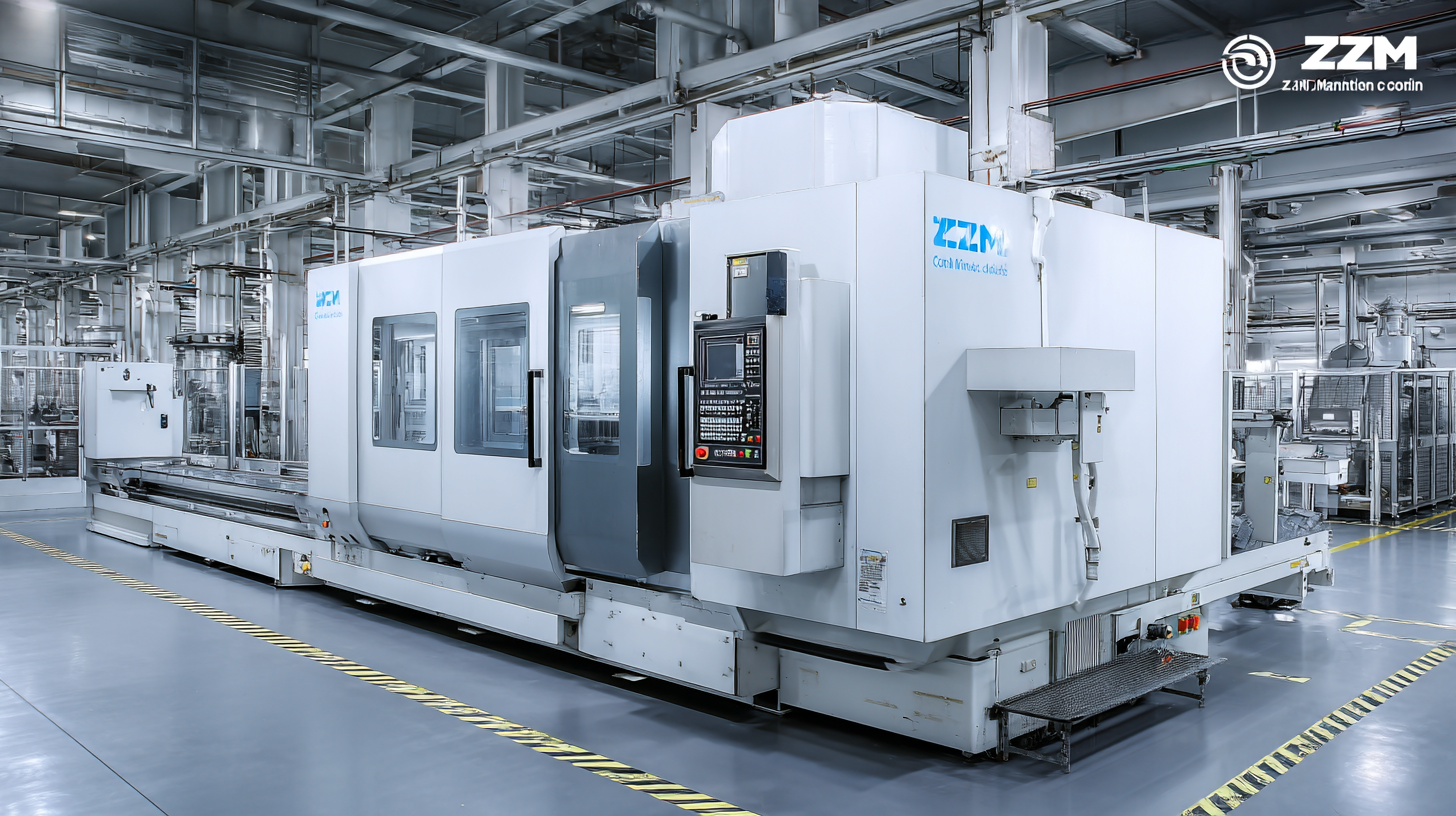7 Reasons Why Investing in the Best Horizontal Machining Center Elevates Manufacturing Efficiency
In the rapidly evolving landscape of modern manufacturing, optimizing efficiency is paramount for maintaining a competitive edge. One significant way manufacturers can achieve this is by investing in a Horizontal Machining Center (HMC). Unlike traditional vertical machines, HMCs offer a unique set of advantages that can dramatically enhance productivity and precision.

From reducing cycle times to improving tool accessibility, the capabilities of a Horizontal Machining Center allow for seamless operation in demanding production environments. In this blog, we will explore seven compelling reasons why incorporating the best Horizontal Machining Center into your manufacturing process can lead to substantial improvements in efficiency, ultimately driving profitability and innovation.
Join us as we delve into how this technology not only streamlines workflow but also positions businesses to adapt and thrive in today's competitive marketplace.
The Impact of Advanced Horizontal Machining Centers on Production Speed
Investing in advanced horizontal machining centers significantly enhances production speed, making them an invaluable asset for any manufacturing operation. These sophisticated machines streamline machining processes by allowing multiple setups and cutting operations to occur simultaneously. As a result, manufacturers can reduce cycle times and increase output, giving them a competitive edge in fast-paced markets.
When integrating horizontal machining centers, consider automating tool changes to maximize efficiency. This allows for minimal downtime between machining operations, ensuring a consistent workflow. Additionally, regular maintenance of the equipment is crucial to maintain optimal performance. Keeping the machines well-calibrated and serviced not only extends their lifespan but also enhances precision and reduces errors during production.
Furthermore, training your workforce on the latest machining technologies can significantly elevate production efficiency. Knowledgeable operators are better equipped to troubleshoot potential issues and optimize settings for various materials. Investing in employee development fosters a culture of continuous improvement, ultimately leading to more streamlined processes and faster production cycles.
Enhancing Precision: How Top-tier Machinery Reduces Errors
In the fast-paced environment of modern manufacturing, precision is paramount. One of the most significant ways to enhance precision is by investing in top-tier horizontal machining centers. According to a report from the National Institute of Standards and Technology (NIST), up to 80% of manufacturing errors can be traced back to inadequate machining processes. High-quality horizontal machining centers are designed to minimize these mistakes by providing enhanced stability and superior cutting capabilities. This improved accuracy not only leads to higher-quality products but also significantly reduces material waste and rework costs.
Moreover, data from the Association for Manufacturing Technology (AMT) reveals that companies utilizing premium horizontal machining centers have achieved a productivity increase of approximately 30% compared to those relying on standard machines. The advanced technology embedded in these machining centers, such as high-speed spindles and sophisticated control systems, allows for complex part geometries to be machined with minimal human intervention. As a result, manufacturers can maintain tighter tolerances and deliver consistently precise components, meeting the rigorous demands of various industries, from aerospace to automotive.
Cost-Effectiveness: Long-term Savings from Investing in Quality Equipment
Investing in a high-quality horizontal machining center (HMC) can lead to significant long-term savings for manufacturers. A study by the National Association of Manufacturers notes that companies that prioritize advanced machinery report productivity increases of up to 30%. This boost in efficiency often translates into reduced operational costs, as enhanced machining precision decreases the need for post-production rework and repairs. By minimizing waste and optimizing the use of raw materials, quality equipment ultimately contributes to a healthier bottom line.
Tips: To maximize the return on investment, consider selecting an HMC with advanced features such as automation capabilities or energy-efficient operation. These features not only enhance production rates but also minimize energy consumption—an important factor as energy costs continue to rise. Additionally, investing in staff training for operating sophisticated machines can dramatically improve the utilization of the equipment, thus enhancing the overall productivity of the manufacturing process.
Another key aspect to consider is maintenance. A well-maintained machine has a longer lifespan, resulting in fewer replacements and repairs over time. According to a report from the International Energy Agency, adopting proactive maintenance strategies can reduce downtime by up to 20%. By ensuring optimal performance and longevity through regular checks and balances, manufacturers can safeguard their investment and continue to reap the financial benefits for years to come.

Automation and Connectivity: The Role of Technology in Modern Machining
In today's competitive manufacturing landscape, automation and connectivity are no longer optional but essential for operational efficiency. According to a report by Statista, the global market for industrial automation is projected to reach approximately $256 billion by 2026. This trend underscores the increasing reliance on advanced technologies to streamline processes and reduce human error, which is particularly relevant to horizontal machining centers that can be integrated into automated systems. By leveraging robotics and AI, manufacturers can reduce cycle times and enhance precision, leading to a significant boost in productivity.
Moreover, the connectivity offered by Industry 4.0 initiatives allows for real-time monitoring and data analytics. According to a McKinsey report, manufacturers that implement smart factory technologies could see a productivity increase of up to 30%. Horizontal machining centers equipped with IoT capabilities facilitate seamless communication between machines and central databases, enabling predictive maintenance and minimizing downtime. This interconnectedness not only optimizes workflow but also provides valuable insights that can drive continuous improvement in manufacturing processes, positioning businesses to adapt quickly to market demands.
7 Reasons Why Investing in the Best Horizontal Machining Center Elevates Manufacturing Efficiency
| Reason | Description | Impact on Efficiency |
|---|---|---|
| Improved Precision | High-quality machining centers offer superior rigidity and thermal stability. | Reduces rework and scrap rates, leading to cost savings. |
| Faster Cycle Times | Advanced programs and faster spindle speeds allow for quick machining. | Increases overall output and meets customer demand effectively. |
| Automation Capabilities | Integrated automation technologies reduce manual handling. | Minimizes labor costs and reduces cycle interruptions. |
| Enhanced Connectivity | IoT integration enables real-time monitoring and data analysis. | Improves decision-making and proactive maintenance scheduling. |
| Versatility | Can handle a wide range of materials and complex geometries. | Facilitates diversification of production capabilities. |
| Upgradable Technology | Modular components can be replaced or upgraded easily. | Extends the life cycle of the equipment and sustains production efficiency. |
| Lower Operating Costs | Efficient energy consumption and reduced maintenance needs. | Increases profitability over time by reducing overhead costs. |
Sustainability in Manufacturing: Eco-friendly Choices with the Right Machinery
As the manufacturing industry faces increasing pressure to adopt sustainable practices, the role of advanced machinery, such as horizontal machining centers, becomes paramount. According to a report by McKinsey, over 70% of manufacturers are prioritizing sustainability in their operations, recognizing that eco-friendly strategies not only meet regulatory demands but also enhance efficiency. Investing in high-quality horizontal machining centers enables manufacturers to reduce waste and energy consumption significantly. Studies show that modern machining centers can improve material yield by up to 30%, directly impacting a company’s environmental footprint.

Moreover, the transition to eco-friendly machinery supports manufacturers in achieving their sustainability goals without compromising productivity. The latest models are designed with energy-efficient motors and optimized cycle times, leading to reduced energy consumption by up to 50% compared to older models. A report from the International Energy Agency highlights that energy efficiency improvements in industrial processes can lead to significant cost savings and lower greenhouse gas emissions. Hence, by integrating advanced horizontal machining centers, manufacturers not only elevate their efficiency but also contribute to a greener future, aligning with global sustainability initiatives.